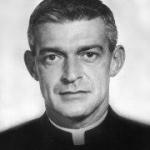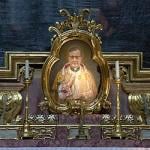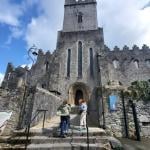Last updated on: November 6, 2015 at 4:38 pm
By
CNA Daily News
Vatican City, Nov 6, 2015 / 09:38 am (CNA/EWTN News).- In a new interview ranging from fame to finances to his childhood dreams, Pope Francis explained that despite his strong concern for the poor, he will not sell the “riches of the Church.” Asked whether he has ever felt pressure to sell “the treasures of the Church,” the Pope responded, “This is an easy question. They are not the treasures of the Church, (but) the treasures of humanity.” “For example, if tomorrow I say that Michelangelo's Pieta is going to be auctioned, it can't be done, because it's not the property of the Church. It's inside a Church, but it belongs to humanity,” he said, explaining that this is true “for all the treasures of the Church.” The Pope’s comments came in an interview with a Dutch newspaper “Straatnieuws.” The paper’s most unique quality: it is published by the homeless of the Dutch city Utrecht. The interview was conducted Oct. 27 at the Pope’s Vatican residence and published Nov. 6. Questions were conducted by a homeless street newspaper vendor named Marc. Vatican journalist Stijn Fens and the former spokesman of the Dutch Bishops’ Conference, Jan-Willem Wits were also present for the interview, as well as the paper’s editor, Frank Dries. Among the topics discussed by the Pope were the dangers of corruption, his childhood dream profession, the Vatican’s finances, and his personal commitment to fight poverty. In his answers to some of the tough questions, Francis did not hesitate to wade into sensitive topics. One of them was whether or not he is worried that his frequent pleas for solidarity in defense of the poor are being politically exploited, as well as how the Church can talk about the issue in an influential way while staying outside the political spectrum. The Pope underlined two temptations in this area, the first being hypocrisy. “If a believer speaks about poverty or the homeless and leads the life of a pharaoh – this cannot be done,” he said. “The Church must speak the truth and also with witness: the witness of poverty.” He also pointed to the dangers surrounding government agreements. While agreements with secular governments can be made, “they must be clear agreements, transparent agreements.” As an example, Francis pointed to the Vatican’s management of the Apostolic Palace. The Vatican is in charge of handling the finances, but “the accounts are all controlled, to avoid corruption, (because) there is always the temptation of corruption in public life – both political and religious.” Discussing the perception that the Vatican is rich, the Holy Father acknowledged that if one makes a catalogue of all the goods of the Church, it might seem like “the Church is very rich.” However, many of the Church’s “riches” are actually treasures that belong to humanity, he explained. He added that while these items are for the enjoyment of all, there are some things that he does sell, such as many of the elaborate gifts he has received. Among them are motorcycles and cars that have either been given away or sold through an auction. Proceeds of the sales then go to the Papal Almoner, Archbishop Konrad Krajewski, and are used for the needs of the poor. And while the Church does have a lot in real estate, he continued, the money is used “to maintain the structures of the Church and to maintain the many works the Church does in needy countries: hospitals, schools.” As an example, the Pope explained that just the day before, he had asked that 50,000 euros be sent to the Democratic Republic of the Congo to build three schools, because “education is important for children.” He also pointed to the 1929 Lateran Concordat that recognized the sovereignty of the Holy See. When the Italian government at the time offered the Church a large park in Rome, Pope Pius XI “said no.” Instead, Pius XI told them, “I want only half of a square kilometer to guarantee the independence of the Church,” Francis observed, explaining that “this principle still stands.” When it comes to his personal commitment to the poor, Pope Francis said that while there are many inspirations driving it, a poignant example that has always stuck with him is a poor woman who used to help his mother with household chores as a child. The woman was Italian, had two children of her own and came to his house three days a week to help his mother with laundry and other tasks. Francis recalled that the woman and her family were “very poor, but good people. And I always remembered that woman. Her poverty moved me.” Although his family was not rich, they always made it to the end of the month, the Pope said, while many times this woman “lacked the necessary things.” He noted how after losing track of the woman, he found her again when he was archbishop of Buenos Aires, and she was 90. He remained close to her over the next three years, until her death at 93. One of the most precious mementos he has of the woman is a medal of the Sacred Heart of Jesus, which she gave him before her death. In fact, the medal meant so much to Francis that he still carries it with him daily. After taking the worn-down medal out of his pocket to show his interviewers, the Pope said that it does him “a lot of good,” and that he thinks of the woman every day “and how much she suffered because of poverty. And I think about all the others who have suffered. I carry it and I pray.” While he would like to see a world in which poverty doesn’t exist, Francis lamented that sin is always a reality that will get in the way. Human greed in particular “is always there, the lack of solidarity, the egoism that creates poverty,” he said. “Because of this it seems a little difficult (to have) a world without poor people.” Pope Francis recognized that after making so many tireless appeals on behalf of the poor and refugees, some people might be getting tired of hearing it. However, he also observed that when it comes to talking about a subject “that isn't nice,” the temptation arises to say “enough.” But despite the tired ears of some, the Pope said he isn’t dissuaded, and that “I have to continue speaking the truth and explain how things are...it's my duty. I feel it inside of me.” Pope Francis also touched on his life at the Vatican’s Saint Martha Guesthouse, and said that he feels “free” there, since he is around more people and is able to “eat in the lunch room with everyone else.” He said that he never dreamed of becoming Pope, and that at 4 years old, he wanted to be “a butcher” after accompanying his mother and grandmother to the market. On his growing fame, Francis said, “I don’t think a lot about the fact that I’m famous,” but often tells himself that while he has an important position now, “In 10 years no one will know you anymore.” “There are two types of fame: the fame of the ‘great ones,’ who did great things…and the fame of the vain. But this last fame is like a soap bubble,” he reflected. Read more
















